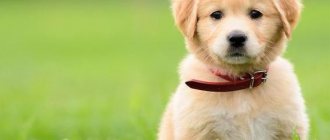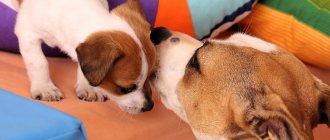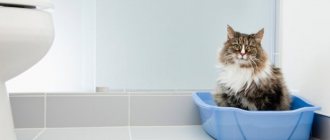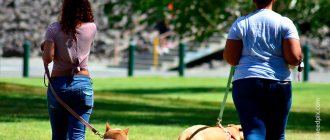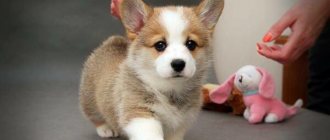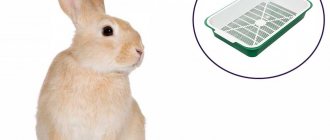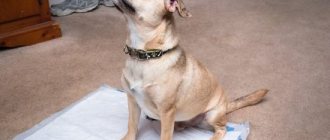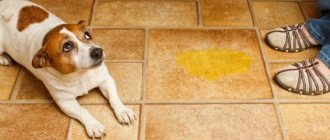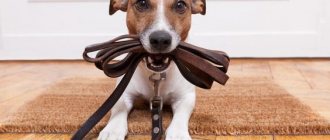Getting a dog is a very important step, somewhat similar to the decision to have a child. A puppy grows up faster, but it goes through all stages of development, just like your own baby. He will need to learn the norms and rules of behavior, get used to the feeding and walking routine. And the most painful question that dog trainers and breeders are often asked: when does a puppy stop peeing at home?
Day mode
In a puppy under 6 months of age, the bladder muscles are still very weak. They physically cannot endure for long. Therefore, leaving your baby at home all day and scolding him for puddles is not very wise on your part. Before asking when a puppy stops peeing at home, try to think about how much time you are willing to dedicate to raising him. If you are too busy, then do not take on additional responsibility for the life and health of the dog.
Physiological aspects of urination in young children
The study of urodynamics of the lower urinary tract is a mandatory stage in the examination of children with malformations of the kidneys and upper urinary tract, urination disorders and enuresis, recurrent urinary tract infections, and pyelonephritis. This problem acquires the greatest significance and complexity in the treatment of newborns and young children, the erasure of clinical manifestations of urination disorders, and the difficulty of conducting special urodynamic studies.
In this aspect, information about the physiology of urination in newborns and young children, which is of decisive importance for the early diagnosis of pathology of the urinary system and the prevention of complications, is of particular importance for pediatric urologists and nephrologists.
The physiology of urination in young children still remains incompletely studied.
The act of urination consists of two phases - the phase of urine accumulation and the phase of urine evacuation. In this case, the detrusor of the bladder and its sphincters (smooth muscle and external, striated) are in a reciprocal relationship: during the phase of urine accumulation, the detrusor relaxes, and the sphincter contracts and retains urine; During the voiding phase, the detrusor muscle contracts and the sphincter relaxes; the bladder is emptied. This process is ensured by a complex regulatory system, the work of which involves the spinal cord, subcortical and cortical centers, a system of biologically active substances and sex hormones.
During the phase of urine accumulation, the main role belongs to the detrusor of the bladder, which ensures adequate reservoir function (due to the elasticity of the bladder muscles and thanks to the system of detrusor-stabilizing reflexes), while the pressure in the bladder, despite its filling, is maintained at a low level (5 –10 cm water column). Evacuation of urine is a complex reflex act, during which synchronous relaxation of the internal and external sphincters of the bladder and contraction of the bladder muscle, the detrusor, occurs. The abdominal and perineal muscles also take part in the evacuation of urine. Normal urination is determined by the anatomical and functional usefulness of not only the sphincters and detrusor, but also the system of nervous structures that regulate this complex act.
The main autonomic center is the spinal center for the regulation of urination, located at the level of the lumbosacral segments of the spinal cord, which, in turn, has sympathetic (Th XII - L II-III) and parasympathetic (L IV-V) representation. It should be remembered that the parasympathetic department is responsible for the autonomic support of the contractile activity of the detrusor, and the sympathetic department is responsible for its adaptation (as the bladder fills, the pressure in it does not increase). Somatic support for the striated muscles of the pelvic floor is provided by the sacral segments. But the connection between the somatic and vegetative links is carried out thanks to a system of reflexes that stabilize the detrusor. It is thanks to this complex system that the reciprocal relationship between the detrusor and the sphincter is ensured (when the detrusor contracts, the sphincter relaxes, and, conversely, the cessation of urination and contraction of the sphincter lead to the restoration of the reservoir function of the bladder) [1, 2].
The dynamic nature of changes in urination during the growth of a child affects both an increase in the hydrodynamic parameters of urination (bladder volume, frequency of urination, changes in the speed of urine flow) and characteristics controlled by consciousness (urge, ability to interrupt urination, behavioral reactions), which together allows us to state the formation “mature” type of urination [1].
The traditional concept assumes that a newborn's urination occurs automatically, due to a spontaneously occurring reflex that closes at the level of the spinal cord. However, recent studies of fetal urodynamics have shown that this opinion is rather simplistic. Evidence has emerged that even in utero urination has behavioral dependencies: urination delays during fetal sleep and the most frequent emptying of the bladder while the fetus is awake have been noted.
When studying the physiology of urination of fetuses 19–40 weeks of gestation using antenatal ultrasound cystometry with natural filling, the storage and evacuation functions of the bladder and the nature of urination of fetuses were assessed. Fetal urodynamics were assessed using indicators such as maximum bladder volume, duration of the voiding cycle, percentage of residual urine, duration of urine excretion, and diuresis [3, 4].
It was noted that from the 19th to 38–40 weeks of gestation, the size of the bladder increases almost 30–40 times and amounts to 0.65–1.0 ml at 20 weeks, and 25–30 ml at 40 weeks. The patterns of growth rates of bladder volume are faster than the growth rates of fetal weight, which over the same period increases more than 10 times.
When studying the duration of the voiding cycle, an indicator equivalent to the rhythm of spontaneous urination, its increase was noted as the gestational age increased. It is estimated that the fetus urinates 72 times a day at 20 weeks and 32–36 times at 38–40 weeks.
In most fetuses, bladder emptying is complete. Moreover, in the second and third trimesters of pregnancy, the presence of 10–15% residual urine is acceptable [3–5].
The urinary pattern of the fetus differs significantly from that in children of the postnatal period. Along with simultaneous urination, fractional urination is noted, which is more common in the third trimester of pregnancy.
Characteristics such as the fractional method of emptying the bladder and its incomplete efficiency (with residual urine of 10–15%) define the so-called “fetal type of urination.”
Equivalents of fetal behavioral reactions manifest themselves in the form of fetal motor activity preceding the elimination of urine, or premature emptying of the bladder in response to a noise stimulus. Thus, during the antenatal period, the formation of fetal urination is carried out by maintaining the functional regime of alternating voiding cycles, the formation of the main indicators of urination: bladder reflex, “fetal” type of urine excretion, equivalents of fetal behavioral reactions [4, 5]. During the last trimester of pregnancy, intrauterine urine is produced much more than in the postnatal period (30 ml/hour), and the frequency of fetal urination is approximately 30 times per day [4–6].
During the postnatal period, urinary control mechanisms undergo further changes. The use of ambulatory bladder monitoring in combination with polysomnography has shown that in newborns during sleep, the bladder is at rest and urination does not occur during sleep [7].
Immediately after birth, urination is usually infrequent. It may take 12 hours or more for the baby to urinate for the first time (up to 24 hours). After the first week, the frequency of urination increases rapidly and reaches a maximum between 2 and 4 weeks of age, averaging once per hour. Then the frequency decreases and remains stable for up to 6 months - 10-15 times a day. After the first year, the number of urinations decreases to 8–10 times a day. In newborns, urination may be intermittent, with more than 80 percent of the time the bladder is completely emptied [8]. Children under six months of age are characterized by frequent and incomplete emptying of the bladder, urination in two steps, and a relatively large volume of residual urine, which indicates functional instability of the bladder, which decreases with age and reaches a certain maturity by one year [9].
It has been established that the formation of bladder function in healthy children occurs in three stages, which have a certain sequence and clear age boundaries. At the first stage of formation of bladder function, the capacity of the bladder undergoes significant changes, which doubles in the first year of life, and sixfold by the age of three. From the second month of life, significant fluctuations in bladder capacity occur during the day, which makes it possible to distinguish between maximum and minimum volumes. The effective volume of the first urination after sleep is formed by the middle of the second year of life. From 6–8 months to one year, the child begins to feel and try to somehow “signal” the need to urinate. There is an active formation of a conditioned reflex, cortico-visceral (vertical) connections are formed, carried out through the subcortical, pontine centers. An important point in the first stage of bladder capacity formation is the period when the child begins to walk. At this time, there is an increase in urination, a decrease in the volume of urine, and the appearance of “intermittent” urination. From the age of one and a half in healthy children, the effective capacity of the bladder steadily increases and the frequency of urination decreases. During the period of formation of the main features of mature urination, distinctive features of the urodynamics of the lower urinary tract in infants and young children were identified. It has been established that the process of filling the bladder in them is carried out under conditions of basic hypertension. The implementation of the voiding cycle at relatively high pressure reflects the hypertonicity of the smooth muscles of the bladder characteristic of this period of a child’s life, which ensures high automaticity of urine evacuation before the appearance of voluntary control of urination [10].
It has also been noted that expulsion pressure is higher in boys than in girls, and up to 70% of infants have intermittent urination. These higher detrusor pressures and intermittent voiding patterns gradually decrease with age over the course of 1–2 years of life, reflecting maturation of the detrusor and sphincteric coordination. Videourodynamic studies confirm these results [8, 11–14]. As the child grows up, in developing urinary skills and developing a mature type of control over it, three main factors become especially important:
1) increasing the capacity of the bladder to ensure its reservoir function;
2) the emergence of voluntary control over the striated muscles (external urethral sphincter) to ensure the voluntary start and end of the act of urination, which usually appears by the third year of life;
3) the formation of direct voluntary control over the voiding reflex, which allows the child to control the process of detrusor contraction with his own volitional effort.
We can talk about the “mature type” of urination when it becomes completely manageable (controlled by the child). Its clinical signs are:
- correspondence of bladder volume to the child’s age;
- the number of urinations per day adequate to diuresis and bladder volume;
- complete urinary retention day and night;
- the ability to delay and interrupt, if necessary, the act of urination;
- the ability to empty the bladder without a previous urge to urinate;
- adequate behavior (striving for privacy when the urge appears, methods of direct preparation for emptying the bladder, worrying about the presence of any bladder disorders, etc.) [15, 16].
A formed mechanism for controlling the miction reflex, similar to that of an adult, develops in most children by the age of 4–5 years. Nighttime urinary control has a wider age range (3–7 years) [17].
Determination of the effective capacity of the bladder in children of different ages is carried out using the formulas:
- in infants: bladder capacity (ml) = 38 + (2.5 × age (months)) [14];
- in children from one year of age: bladder capacity (ml) = 30 + 30n, where n is age in years [18].
Thus, knowledge of the complex and multicomponent regulatory mechanisms of urination will help to understand the etiopathogenesis of urination disorders and urinary incontinence in children. However, following the diagnostic protocol developed on the basis of the recommendations of the International Children's Continence Society (ICCS), it is possible, after conducting the necessary studies, to clearly differentiate the differences in the causes and nature of urinary incontinence, prescribe treatment that is pathogenetically justified, conduct a rehabilitation course and achieve recovery [19].
The work was carried out within the framework of the state task of the Russian Ministry of Health “Development of tactics for postnatal treatment of children with antenatally detected defects of the urinary system.”
Literature
- Javad-Zade M. D., Derzhavin B. M., Vishnevsky E. L. et al. Neurogenic dysfunctions of the bladder. M.: Medicine. 1989. 384 p.
- Franco I. Overactive bladder in children. Part 1: Pathophysiology // J Urol. 2007; 178 (3 Pt 1): 761–8.
- Deryugina L. A. Antenatal diagnosis of congenital diseases of the urinary system and rationale for the management of children in the postnatal period. Author's abstract. dis. ... Doctor of Medical Sciences, 2008. 50 p.
- Deryugina L. A., Morozov D. A. Formation of fetal urinary excretion at the stages of gestation // Pediatric surgery. 2007. No. 6. pp. 22–27.
- Deryugina L.A. Disorders of the urodynamics of the lower urinary tract in fetuses // Pediatric surgery. 2007. No. 3. P. 30–34.
- Goellner MH, Ziegler EE, Fomon SJ Urination during the First 3 years of life // Nephron. 1981; 28: 174–178.
- Yeung CK, Godley ML, Ho CKW, Ransley P., Duffy PG, Chen CN, Li AKC Somt ntw insights into bladder function in infancy // Br J Urol. 1995; 6; 235–240.
- Yeung CK, Godley ML, Duffy PG, Ransley PG Natural filing cystometry in infants and children // Br J Urol. 1995; 75:531–537.
- Nikolaev N. S. Diagnosis and treatment of bladder dysfunction in young children. Author's abstract. dis. ... Ph.D., 2003. 27 p.
- Rudakova E. A. Bladder dysfunction in young children. Author's abstract. dis. ... Doctor of Medical Sciences, 1995. 28 p.
- Yeung CK, Godley ML, Dhillon HK, Duffy PG, Ransley PG Urodynamic patterns in infants with normal lover urinary tracts or primary vesico-ureteric reflux // Br J Urol. 1998; 81:461–467.
- Bachelard M., Sillen U., Hansson S., Hermansson G., Jodal U., Jacobsson B. Urodinamic pattern in asymptomatic infants: siblings of children with vesico-ureteric reflux // J Urol. 1999; 162:1733–1737.
- Sillen U., Solsnes E., Yellstrom AI, Sandberg K. The voiding pattern of healthy preterm neonates // J Urol. 2000; 163:278.
- Holmdahl G., Hansson E., Hansson M., Hellstrom A.-L., Hjälmås K., Sillen U. Four hour voiding observation in healthy infants // J Urol. 1996; 156:1809–1812.
- Yeates WK Bladder function in normal Micturition. In: Kolvin I., MacKeith RC, Meadow SR (eds). Bladder Control and Enuresis. London, W Heinemann Medical, 1973. 28–365.
- Vishnevsky E. L., Laurent O. B., Vishnevsky A. E. Clinical assessment of urinary disorders. M.: Terra, 2001. 96 p.
- Hellstrom AL, Hansson E., Hansson S., Hjälmås K., Jodal U. Micturition habits and incontinence in 7-year-old Swedish school entrants // Eur J Pediatr. 1990; 149(6):434–437.
- Koff SA Estimating bladder capacity in children // Urology. 1983; 21: 248–251.
- Basic principles of diagnosis and treatment of urinary disorders in children and adolescents. Methodical recommendations No. 10. M., 2013. 40 p.
T. V. Otpuschennikova, Candidate of Medical Sciences
FSBEI HE SSMU im. V. I. Razumovsky, Saratov
Contact Information
Physiological aspects of urination in young children / T. V. Otpusnikova For citation: Attending physician No. 9/2018; Page numbers in the issue: 26-28 Tags: enuresis, pyelonephritis, lower urinary tract, conditioned reflex
Not for an owl
So, from the moment the puppy appears in the house until he reaches 6 months, you need to rearrange your daily routine in such a way as to walk him at least four times a day. The first departure is early in the morning, at about 5-6 o'clock. After this, you will have enough time to do your usual chores and get ready for work. Be sure to take another walk before leaving. This will make it easier for the puppy to endure.
Lunch break should be an occasion to look home. By going outside for just 15 minutes, you will provide your baby with the opportunity to wait until the evening without unnecessary discomfort. And after dinner you need to devote at least 2-3 hours to a walk.
How to teach a puppy to be clean - frequent walks
Frequent walks are an important step in teaching your puppy to be clean. Before you teach your puppy to be clean, do everything possible to ensure that you have as much free time as possible in the first months of his life. If you have the opportunity to go outside with your puppy every 1.5-2 hours, that’s great. The dog is growing and therefore the metabolism in its body is quite fast, as a result of which the bladder and rectum are filled in a short time. If you do not live on the ground floor, taking walks often is quite problematic, but you should still try to do it. On the street, give the puppy the opportunity to calmly walk or run, smell and look at everything, before recovering, he needs to explore a suitable place and concentrate. Some novice dog breeders make the mistake of taking the puppy home immediately after he has completed all the necessary actions. Next time he will definitely try to endure until the end in order to extend the walk, and he will definitely leave everything else for later, that is, he will do it at home.
Never play with your puppy or allow him to play with other puppies or dogs until he has gone to the toilet.
Your behavior
Of course, every owner eagerly awaits the moment when the puppy stops peeing at home. But you shouldn’t express your frustration too much if he doesn’t yet demonstrate the desired behavior. And even more so punish him if he peed in the wrong place. By doing this, you will achieve only one thing: the pet will more carefully choose places to relieve itself, climb onto the sofa or onto the bed. Upholstered furniture quickly absorbs the puddle, and the “traces of the crime” will be hidden. For now, of course.
This is what teenagers do when their owners try to “educate” them, because they are already more intelligent. The puppy will not understand at all why you are scolding him. Therefore, you should forget about slippers on the butt or poking your face into a puddle. This will not achieve anything, but you will lose contact. Give a noise signal instead. That is, throw something that rings or just clap your hands.
Education methods
The main method of education is a combination of praise and punishment. With regular use of these tools, the animal willingly performs the desired actions and avoids unwanted ones.
Praise
After completing the desired action, use a reward system. Cheer up your smart pet with a friendly voice, treat him with a treat and stroke his withers. Having noticed the relationship, your pet will relieve itself for the sake of your approval.
Gradually, all incentive manipulations need to be reduced to nothing. Your task is to make going to the toilet a common occurrence.
Punishment
When relieving yourself in an inappropriate place, express your dissatisfaction in a stern voice. If your pet is trained in commands, then say “Fu” or “No” when trying to sit on your favorite carpet. You can also try taking your pet's favorite toy and giving it outside immediately after proper bowel movement.
When raising children, a light slap on the rump with a newspaper is allowed. This action should not cause pain. The pet should only be a little scared and understand from the owner’s intonation that the actions taken have upset him.
Another effective method of punishment is ignoring. It works well on representatives of decorative breeds and affectionate big dogs. Such animals will do everything possible to regain the favor of their beloved owner.
Common mistakes - what not to do
Having figured out how to stop a dog from crapping in an apartment, pay attention to those actions that can cause a completely opposite reaction. When raising an animal, it is prohibited:
- Screaming or using physical force. Such punishments are especially dangerous during and immediately after defecation. This distorts perception. The dog perceives his excrement as something bad and wrong. To avoid punishment, he begins to eat them or do his business in more secluded places.
- Use a nickname during punishment. A negative association is also reinforced here. It is more correct to say something neutral. The phrase “Bad Dog” would be appropriate.
- Change your walking schedule and diet. Having become accustomed to one schedule, your pet is unlikely to cope with major changes.
- Poking his face into a puddle or feces. This does not give the desired results, but only cultivates resentment.
Apply punishments after a long period. The relationship between the owner’s dissatisfaction and the actions taken is lost. Instead of a positive response, the likelihood of losing the trust of your four-legged friend increases.
Remember that the main conditions are your love and patience. By gaining your pet's respect, you will quickly achieve results in his behavior.
What do we have to do
If there is a clearly thought out scheme, then acting on it is much easier. After all, if you just dream about those days when the puppy stops peeing at home, it won’t make them come any faster. You can proceed as follows. In almost all apartments, the toilet is located close to the front door. Therefore, we slowly move the puppy’s tray to the toilet and teach him how to use it. The door should be left ajar so that the baby can push it with his paw. When this moment passes, the door closes.
Then everything depends on you. As soon as the puppy gives a signal that he wants to go to the toilet, that is, he pushes the door with his paw, you grab the leash and run out into the street with him. You can’t wait long, so if it’s not frosty outside, try to act quickly. Of course, you will have to constantly take time off from your work, but you just need to get through this period.
Stop your dog from fouling in the house
It is impossible, without taking measures, to wean a grown-up puppy or an adult dog from crapping in the apartment. But it won’t be possible to act with force. In each individual case, it is necessary to take into account the reasons for bad behavior and eliminate them.
Puppy
From 6 months the baby begins to endure, the urinary system is ready for emptying by the hour. Walking is introduced. In the first days there will be an acquaintance with the new environment, and upon returning home, a trip to the toilet. Over the months of quarantine, puppies usually develop just such an algorithm of actions. To discourage your pet from shitting on the floor, you need to use the following tricks:
- Half an hour before going for a walk, feed the dog and wait until it starts looking for a place.
- It is recommended to stay in the air with her for a long time and give her something to drink at the first request. If she wants to go to the toilet in the house, she will soon not be able to stand it and go to the grass.
- When the long-awaited event happens, you need to praise the baby.
If the puppy turned out to be a tough nut to crack and peed or pooped in the apartment after a walk, then next time it is better to go with him to a place where other dogs gather and praise someone else’s pet for toileting.
Expert opinion
Anna Abramenko
An avid dog lover. Experience in veterinary medicine since 2009.
Ask a Question
The intervals between going out for a walk should not exceed 8 hours.
Adult dog
If an animal appears in the house from other owners, then you will have to be patient to accustom it to the street and stop it from crapping in the house. You can’t be angry at failures; for him, moving and changing his family is a lot of stress. The situation may also be due to resentment. You need to show care, don’t be lazy to stroke and praise him once again. A slow development of the regime is needed.
Expert opinion
Anna Abramenko
An avid dog lover. Experience in veterinary medicine since 2009.
Ask a Question
If suddenly your dog starts peeing or pooping on the carpet, you first need to find the reason in your relationship with it.
Causes:
- a child or another animal appeared in the house;
- a full-time job appeared;
- the pet is often left alone, he lacks attention and it does not matter whether he is an adult male mastiff or a female lapdog.
You need to endure and pay every possible attention to your pet.
If a dog deliberately shits in the house in the absence of the owner, you can try leaving him in a special cage. There must be food, water, soft bedding and favorite toys inside. You should start getting used to a new habitat when all household members are in the house.
Teaching an adult dog to go to his place, and not to the carpets, is possible only with determination and rigor. It is important to show disapproval and frustration, as many breeds are driven by a desire to dominate.
If an old dog begins to pee and poop in the house, it is recommended to take it to the veterinarian. You may have to come to terms with the problem due to a disease of the urinary system. The doctor can recommend hygiene products and talk about care.
When to expect relief
In fact, a dog grows up very quickly. Therefore, the moment when puppies stop peeing in the apartment is not far off. Any dog begins to easily adhere to your schedule at the age of 6-7 months. But until this age you need to keep an eye on her and “catch her.” It's simple, not complicated or time consuming. You just need to take the puppy outside at least once every 3 hours. Or, if you decide to train him to the tray first, put him in the designated area as soon as he wakes up or has eaten a hearty meal. Likewise at night, if he woke up and began to caress.
How to teach your dog to be clean using a crate
There is another tip on how to toilet train a puppy - buy a special crate. This method has proven itself in practice and gives excellent results. Every experienced breeder will tell you how to teach a dog to cleanliness using a crate.
While in a crate, the puppy is in a limited space and quickly learns to control the state of his muscles, since he is not able to actively move in it. The lack of active movement contributes to some delay in the urge to go to the toilet. In a crate, if there is no tray, the puppy will probably not get dirty, since it is associated with a den in which one must behave decently. Of course, if you leave your dog in a crate for a long time, you need to put a tray in it. However, try to do this as little as possible - let the puppy be there only during sleep, rest, or your urgent business. The main thing is to strictly follow one simple but important rule: give the puppy the opportunity to go to the toilet immediately after he leaves the crate.
Currently, according to the instructions of veterinarians, puppies are required to withstand home quarantine during the vaccination period. As a rule, this occurs during the most favorable age period for the puppy’s initial upbringing, socialization and training, that is, before he reaches approximately three months of age. It is at this time that it is necessary to work with the puppy outside.
Situations where a puppy has been walking for quite a long time and during this time has never gone to the toilet, but at home has finally recovered, are quite common. The most common mistake owners make is punishment. Don't consider your pet to be harmful or stupid! He is still small and perceives a walk as one of the most pleasant events. There are so many interesting things around that you need to meet, smell, touch and taste! Is this to the toilet? Don’t worry, as the puppy grows and develops with proper upbringing, it will definitely learn the rules.
Physiological features
It happens that a puppy gets so used to doing “his business” at home that he refuses to go to the toilet outside. He happily walks on the playground, and then runs home to his diaper. The owners are horrified and rush to call the breeder or familiar dog breeders. There is only one question: at what age will a puppy stop peeing at home?
The owner needs to remember that he is the one in charge of the process. You shouldn’t blame everything on your pet: if he continues to urinate in the corners, then it’s your fault. Sometimes a few days are enough in which you devote all your attention to your pet, and the toilet issue will stop worrying you once and for all. And sometimes even one praise will be decisive.
Typically, a healthy puppy will empty its bladder immediately after waking up, and its bowels within 15 minutes of feeding. These rules must be followed during training. Don’t waste time and take your pet outside or to the litter tray on time.
How to prolong the life of a person with dementia?
Dementia is an irreversible process. According to medical studies, patients can live with this diagnosis for up to 10 years. Relatives are faced with a task: if mom, dad, grandma or grandpa has senile dementia, how can they help their loved one and try to preserve the remnants of their intellect?
In the initial stages of the disease, you need to intensively train the brain: solve crossword puzzles with the patient, solve problems from the school curriculum, watch TV quiz shows and offer your own answers. It is recommended to engage in gentle physical exercise and walk more in the fresh air. There are special simple exercises for dementia for the elderly; they are easy to perform, but they require concentration, which is very useful for such patients.
Communication with well-known people is welcome. Conversations, discussions, telephone conversations are useful. Despite the manifestations of the disease, relatives need to remember that in front of them is the same beloved and close person whom they are accustomed to knowing all their lives. All changes in character occur not by his will, but under the influence of an incurable disease. Dementia cannot be cured, but its progression can be delayed and delayed.
Recommendations for training
When your pet is 2 months old, the most difficult period is over. Now he becomes more intelligent and tries to assimilate norms and rules, especially if this is supported by praise. A happy moment will soon come when the puppy stops peeing frequently at home. Now reducing the number of “misses” depends only on you. If you are watching TV and the puppy starts to spin around and look for a place, urgently put him in the tray or run outside. Then every day he will become more and more accustomed to the fact that he can relieve himself only in the place designated for this.
Place, by the way, is also of great importance. Remember how at home a corner in the bathroom was allocated for him, which was covered with a diaper? It is advisable to do the same on the street. Always sit your pet in one place, perhaps he will have the opportunity to sniff old puddles or piles. When planting him on the ground, give one command each time. Come up with it yourself, the wording doesn’t matter here. And praise when the process is completed.
When a puppy stops littering the house depends on the characteristics of the breed
There is no clear answer to the question of when a puppy stops shitting at home - it depends on the characteristics of the breed, as well as on the individual characteristics of each dog. Smart puppies quite quickly begin to ask to go outside or to the balcony, and by three to four months they practically stop living in the apartment. After cleaning, treat the area where the puppy accidentally went to the toilet with a strong-smelling disinfectant. Be prepared that at a later age, accidental adjustments may be repeated periodically - this is absolutely natural. A puppy, like a small child trained to go potty, sometimes makes mistakes (gets carried away by the game, does not have time to run, etc.). Finally, the habit of cleanliness is formed only with age, of course, if the puppy has no health problems. When he cannot get used to cleanliness at a later age (approximately over six months), provided that he is properly toilet trained, look for problems in the psyche or physiology of your pet and be sure to consult a veterinarian.
If the problem returns
It also happens. The breeder informs the owner of the approximate time frame at which the puppy stops peeing at home. This is usually closer to 6 months of age. But sometimes after a while the owner is faced with the fact that puddles and piles begin to appear again. If we are talking about a young dog, then the problem is most likely psychological in nature:
- Excessively strong emotions. When a dog is happy to meet its beloved owner, it may wet itself. Or she is afraid of punishment for the trick. If people yell at a dog and beat it for mischief, it will do more mischief.
- The reason may also be longing for the owner. Experiments were conducted when cameras were installed in the homes of puppy owners who complained about such problems. As a result, it was possible to see that when the owners are at home, the dog behaves perfectly. She asks to go to the toilet, she is calm and happy. But as soon as they leave, she begins to rush and howl. Sometimes, unable to withstand the melancholy, she relieves herself and nervously gnaws on things.
- Problems of master's authority. A young dog may tend to be dominant. And if the owner demonstrates excessive gentleness, then the pet feels unpunished.
It happens that several months of training go to waste, and, at first glance, it is not clear why. The puppy stopped peeing on the diaper or the teenager began to relieve himself in the corners - pay attention to the points listed above. Perhaps the problem can be solved quite simply.
How to teach an adult dog to go to the litter box or diaper
Of course, it is better to toilet train an adult dog from a young age, but situations are different, and sometimes it happens that an adult dog is trained to live in a house.
Unlike a puppy, who quickly absorbs any information and some behavior easily becomes a habit, you need to be more patient with an adult dog.
- A dog is a clean animal and will not go to the same place if it is dirty. Therefore, you should always remove excrement as quickly as possible before the smell is absorbed. As is the case with puppies, it is best to temporarily remove carpets and shoes (especially tall, soft boots) until the dog learns to do its business in a certain area.
- Most dogs, when they want to go to the toilet, begin to restlessly look for a place, most often near doors or windows, whine, and stomp around in one place. Having noticed such behavior, you need to take it or carry it (if the size of the dog allows you to lift and carry it) to a diaper or tray and, after the dog has done its business, actively praise it and reward it with a treat.
- An adult male, unlike a small puppy, pees while standing - a special tray with a column has been invented for males. As soon as the male approaches various surfaces - the legs of a chair, table or corners of walls, door frames, and begins to sniff carefully, be sure to take him to a tray with a post - the dog will learn to mark in a certain place. This will protect the dog owner's furniture and walls from permanent marks.
Possible problems with an adult dog
If with a puppy everything is quite simple - you need to be patient and methodically repeat the steps with transfer to a diaper or tray, then with an adult dog additional difficulties may arise. It happens that you have to pick up a dog from an enclosure, a private home, or simply from the street. Such a dog is not accustomed to living in a confined space in an apartment; training a dog to go to the litter box is a very difficult task. However, an adult dog can easily tolerate walking 2-3 times a day.
Unlike a puppy, an adult dog can and should be scolded for incorrect behavior. But you also need to not overdo it with negative behavior.
You can only scold a dog if you catch it doing something wrong!
The dog does not understand delayed punishment and will perceive the owner’s cries as a bad mood. The action-punishment chain is understandable for the dog; in this case, it perceives punishment as a reaction to a certain act and will henceforth try not to irritate the owner with such actions. When scolding a dog, even at the right time, you cannot overdo it - a loud shout, a prohibitive command, and then ignoring the desire to make peace will be enough for the dog.
For a pet, the main fear is lack of attention from the owner. Correct behavior must be vigorously encouraged - in addition to affection, you need to give the dog what it loves most - be it a treat or a game.
Consult your doctor
Sometimes the problem lies in your pet's physiology. For example, a female dog may continue to pee periodically at home until she is two years old. This is due to the formation of the hormonal system. Periodically, the dog begins to leave a number of small puddles. This is a phenomenon that goes away after the first birth or with age. It occurs, according to statistics, in one out of 5-7 females. If the problem appears in a young dog that has been trained to relieve itself on the street, then pay attention to the following factors:
- In cold weather, a dog can catch a cold. This leads to various kinds of inflammatory processes. It is possible that increased urination is a consequence of this.
- Jealousy. If the family has a child, a cat or another dog, then your pet may simply start leaving puddles out of jealousy. Or maybe mark the territory, showing the “newcomers” who is boss in this house.
- Severe stress.
As you can see, the question of how many months a puppy stops peeing at home remains open: there are too many nuances here. But normally this happens at 6-7 months.
When does a puppy stop peeing at home? Recommendations and methods for training a puppy to use the tray
Getting a dog is a very important step, somewhat similar to the decision to have a child. A puppy grows up faster, but it goes through all stages of development, just like your own baby. He will need to learn the norms and rules of behavior, get used to the feeding and walking routine. And the most painful question that dog trainers and breeders are often asked: when does a puppy stop peeing at home?
